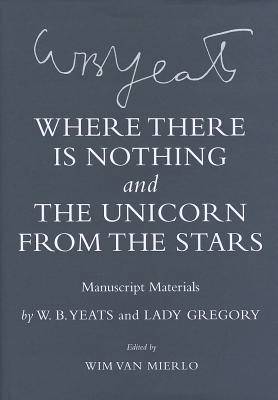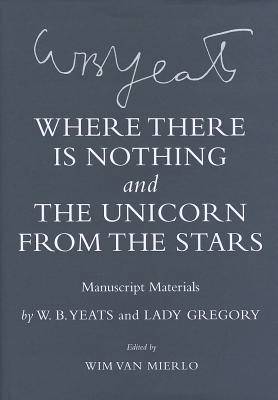
- Retrait gratuit dans votre magasin Club
- 7.000.000 titres dans notre catalogue
- Payer en toute sécurité
- Toujours un magasin près de chez vous
- Retrait gratuit dans votre magasin Club
- 7.000.0000 titres dans notre catalogue
- Payer en toute sécurité
- Toujours un magasin près de chez vous
"where There Is Nothing" and "the Unicorn from the Stars"
Manuscript Materials
W B Yeats, Lady GregoryDescription
"The Unicorn from the Stars" (1907) is a thorough reworking of "Where There Is Nothing" (1902), in which Yeats sought to create a "religious Don Quixote," whose spiritual unorthodoxy and rebellion against social conventions climax in a rejection of material existence: "where there is nothing, there is god." Driven by the conflict between the hero's spiritualism and the dogmas of the church and society at large, "The Unicorn from the Stars" has a mystical force that does not completely relinquish the dramatic realism of "Where There Is Nothing." Through his preoccupation with "passionate" living, the main character rejects the material world, providing Yeats with the opportunity to balance realism and supernatural revelation in a dynamic that became central to his art.
In the Cornell Yeats edition of the two plays, Wim Van Mierlo recounts their complicated composition history and makes clear the ways in which the latter diverges from its predecessor. Van Mierlo clarifies the role of George Moore in the origin of the earlier play's story line and the dispute between him and Yeats that ensued. Beyond this basic plot, Lady Gregory played an important part in the writing of both plays, especially in characterizations and dialogue of the first play. Insofar as is possible, Van Mierlo unscrambles the process by which she and Yeats worked together and apart to rework the earlier play into the very different "The Unicorn from the Stars." Lady Gregory later expressed her disappointment about the level of credit Yeats was willing to give her for her role. This was the last play they wrote together.
Spécifications
Parties prenantes
- Auteur(s) :
- Editeur:
Contenu
- Nombre de pages :
- 686
- Langue:
- Anglais
- Collection :
Caractéristiques
- EAN:
- 9780801451188
- Date de parution :
- 12-06-12
- Format:
- Livre relié
- Format numérique:
- Genaaid
- Dimensions :
- 175 mm x 239 mm
- Poids :
- 1315 g

Les avis
Nous publions uniquement les avis qui respectent les conditions requises. Consultez nos conditions pour les avis.






